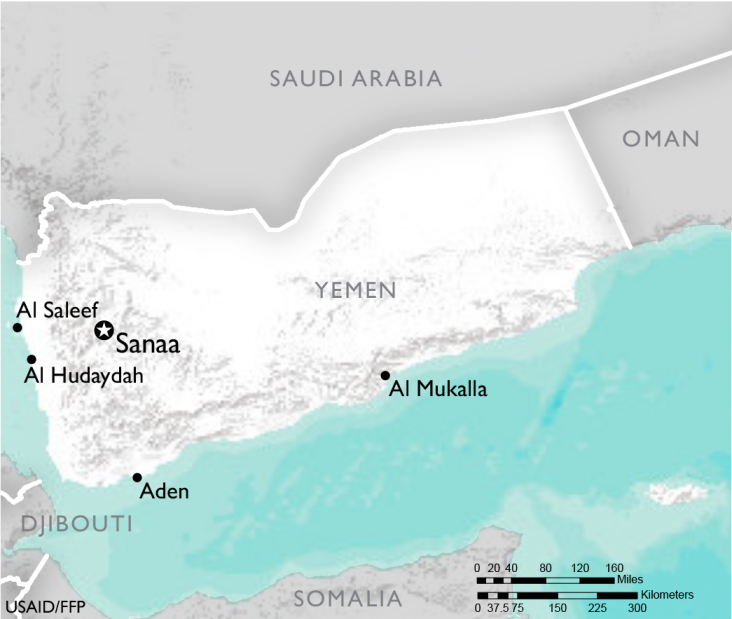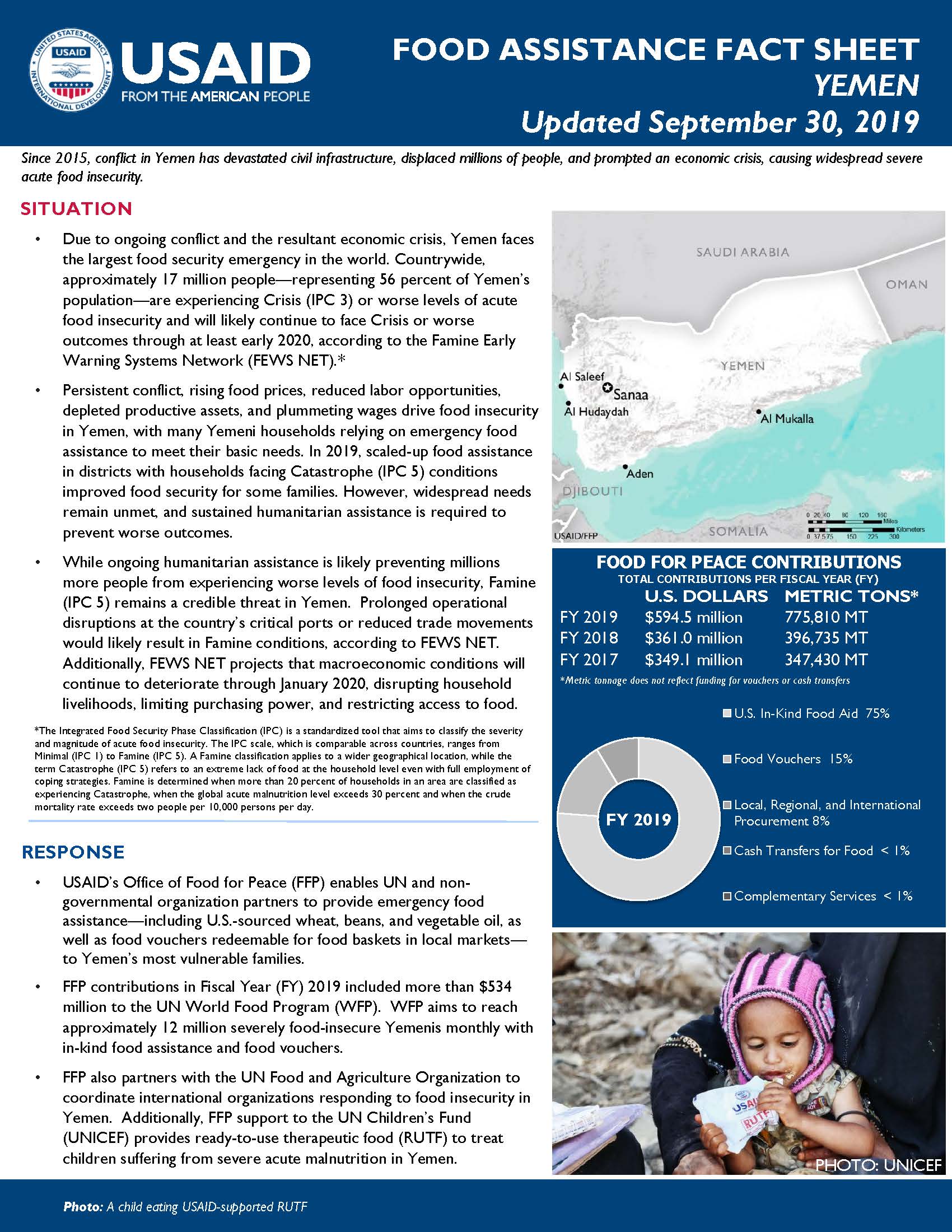- What We Do
- Agriculture and Food Security
- Democracy, Human Rights and Governance
- Economic Growth and Trade
- Education
- Environment and Global Climate Change
- Gender Equality and Women's Empowerment
- Global Health
- Humanitarian Assistance
- Transformation at USAID
- Water and Sanitation
- Working in Crises and Conflict
- U.S. Global Development Lab
Speeches Shim

September 30, 2019
Since 2015, conflict in Yemen has devastated civil infrastructure, displaced millions of people, and prompted an economic crisis, causing widespread severe acute food insecurity.
Situation
- Due to ongoing conflict and the resultant economic crisis, Yemen faces the largest food security emergency in the world. Countrywide, approximately 17 million people—representing 56 percent of Yemen’s population—are experiencing Crisis (IPC 3) or worse levels of acute food insecurity and will likely continue to face Crisis or worse outcomes through at least early 2020, according to the Famine Early Warning Systems Network (FEWS NET).*
- Persistent conflict, rising food prices, reduced labor opportunities, depleted productive assets, and plummeting wages drive food insecurity in Yemen, with many Yemeni households relying on emergency food assistance to meet their basic needs. In 2019, scaled-up food assistance in districts with households facing Catastrophe (IPC 5) conditions improved food security for some families. However, widespread needs remain unmet, and sustained humanitarian assistance is required to prevent worse outcomes.
- While ongoing humanitarian assistance is likely preventing millions more people from experiencing worse levels of food insecurity, Famine (IPC 5) remains a credible threat in Yemen. Prolonged operational disruptions at the country’s critical ports or reduced trade movements would likely result in Famine conditions, according to FEWS NET. Additionally, FEWS NET projects that macroeconomic conditions will continue to deteriorate through January 2020, disrupting household livelihoods, limiting purchasing power, and restricting access to food.
Food Assistance Fact Sheet - Yemen ![]() (pdf - 267k)
(pdf - 267k)
*The Integrated Food Security Phase Classification (IPC) is a standardized tool that aims to classify the severity and magnitude of acute food insecurity. The IPC scale, which is comparable across countries, ranges from Minimal (IPC 1) to Famine (IPC 5). A Famine classification applies to a wider geographical location, while the term Catastrophe (IPC 5) refers to an extreme lack of food at the household level even with full employment of coping strategies. Famine is determined when more than 20 percent of households in an area are classified as experiencing Catastrophe, when the global acute malnutrition level exceeds 30 percent and when the crude mortality rate exceeds two people per 10,000 persons per day.
Response
- USAID’s Office of Food for Peace (FFP) enables UN and non-governmental organization partners to provide emergency food assistance—including U.S.-sourced wheat, beans, and vegetable oil, as well as food vouchers redeemable for food baskets in local markets— to Yemen’s most vulnerable families.
- FFP contributions in Fiscal Year (FY) 2019 included more than $534 million to the UN World Food Program (WFP). WFP aims to reach approximately 12 million severely food-insecure Yemenis monthly with in-kind food assistance and food vouchers.
- FFP also partners with the UN Food and Agriculture Organization to coordinate international organizations responding to food insecurity in Yemen. Additionally, FFP support to the UN Children’s Fund (UNICEF) provides ready-to-use therapeutic food (RUTF) to treat children suffering from severe acute malnutrition in Yemen.
Food for Peace Contributions
Total Contributions:
| U.S. Dollars | Metric Tons | |
|---|---|---|
| Fiscal Year 2019 | $594.5 million | 775,810 MT |
| Fiscal Year 2018 | $361.0 million | 396,735 MT |
| Fiscal Year 2017 | $349.1 million | 374,430 MT |
* Metric tonnage does not reflect funding for vouchers or cash transfers.
Related Resources


Comment
Make a general inquiry or suggest an improvement.